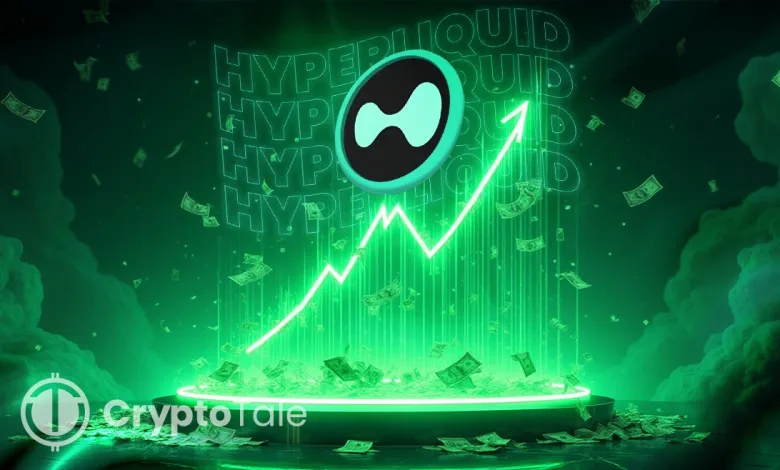Hyperliquid Shows Zero Downtime During Record Crypto Market Crash

- Hyperliquid operated during the $670B market collapse with no downtime or latency.
- Its HyperBFT consensus ensured execution even as global exchanges suffered disruption.
- The event demonstrated that full-on-chain architectures can withstand unprecedented volumes.
During one of the worst days in cryptocurrency history, Hyperliquid’s blockchain remained stable. The platform reported zero downtime or latency issues even as global trading volumes spiked. Following the 100% tariffs imposed by former U.S. President Donald Trump on China, the market collapsed, erasing over $670 billion in investor wealth. More than 1.6 million traders were liquidated, resulting in total losses of $19 billion in under 24 hours.
Amid this chaos, Hyperliquid confirmed that its HyperBFT consensus and execution system handled the surge without interruption. The announcement drew industry attention, as many exchanges, including Coinbase, Binance, and Kraken, faced severe congestion and brief slowdowns. Analysts said the network’s performance marked a new milestone for decentralized finance.
The event became a real-world stress test that challenged long-standing doubts about on-chain scalability. Hyperliquid stated that its fully on-chain financial system processed record-high volumes while maintaining smooth transactions and ensuring solvency remained intact.
HyperBFT Consensus Handles Surge With Speed and Precision
The primary contributor to this success was the HyperBFT, which powered Hyperliquid’s architecture. It employed the rapid block propagation and low-latency confirmations together to execute trades almost instantly. According to the technical report released by the project, the system achieved consensus among distributed nodes, which helped avoid bottlenecks during extreme trading events.
This structure enables the entire Hyperliquid trading ecosystem to be on-chain, including derivatives and perpetual contracts. Traditional exchanges use centralized servers, whereas Hyperliquid’s model handles all major operations on-chain. The project claimed that this kind of operation provided sub-second finality, even during the most challenging times.
This framework also made sure that the risk and margins mechanisms in the platform worked properly to avoid a cascading collapse in the market swings. The risk engine was very precise in balancing and liquidating thresholds of the users, which contributed to the continuity of solvency across all accounts. Hyperliquid claimed this confirmed the resiliency of its infrastructure in the face of all-time network overload.
Furthermore, the event demonstrated that decentralized exchanges can achieve the same level of execution reliability as traditional financial systems. It revealed that blockchain-based trading systems could maintain both transparency and performance when facing global shocks.
Related: Trader on Hyperliquid Loses $21M After Private Key Breach
A Turning Point for On-Chain Financial Infrastructure
The market turmoil served as a test for blockchain infrastructure, revealing its very nature. Centralized exchanges struggled to handle liquidation processes, whereas Hyperliquid operated without any issues in all its modules.
The success of Hyperliquid could transform the DeFi landscape, as more institutions seek transparent and compliant trading environments. It showcases the way decentralized systems handle institutional-grade throughput while remaining open at the same time. The traders are now asking whether on-chain systems, such as Hyperledger, could replace legacy infrastructures for high-frequency trading.
The blockchain revived the debate around Layer-1 scaling. A large number of networks rely on either rollups or sidechains to carry their heavy loads. Hyperliquid, however, took a different route and handled all its transactions through its base layer without any offloading. This technique could indeed have an impact on future blockchain designs, which are often dictated by the necessity of high throughput and low trust.
Hyperliquid’s reliability during one of the most significant market crashes illustrated a fundamental fact: the trust in financial systems is represented by their resilience. As the markets change, will it be possible that completely on-chain networks, like Hyperliquid, will be the ones setting a new global standard for dependability?





